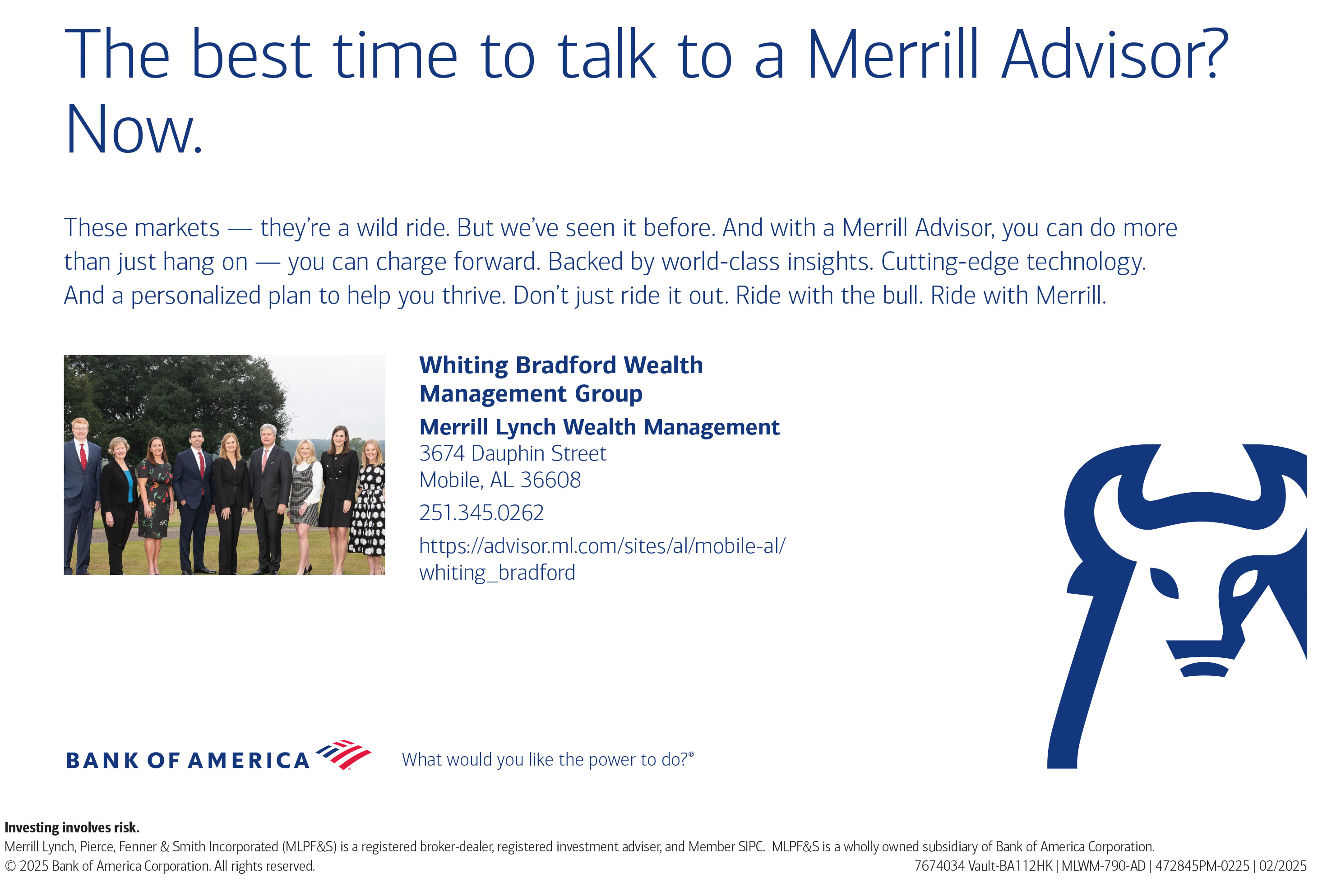
It’s oyster season, folks. Thank goodness, and Hallelujah!
Linda and I kicked off the Thanksgiving holidays by attending a wonderful oyster roast party. There, I met and enjoyed the hard work and delicious oysters provided by Brandon Smith, owner of Grayson Bay Oyster Company, and his “Crafted Emerald Coast” oyster catering business, ECOyster Mobile Raw Bar.
Brandon and I made arrangements to meet at Pensacola’s Odd Colony Brewing Company, home to Tidal Guides draft beer, named in honor of his oysters. With beer in hand, we sat down to talk about his oyster farm and his traveling catering business. Brandon and his wife, Natalie, own and operate the sister companies.

They took over ECOysters, after the original owner, Thomas Derbes, began working as Santa Rosa County’s Sea Grant Agent and deemed it a conflict of interest. In April 2023, Brandon, who was already knee-deep in Grayson Bay’s farm-raised oysters in Pensacola Bay, stepped in.

Brandon, who grew up in Phoenix, Arizona, took an interesting track to land in Pensacola. In 2000, he drove his 1974 Volkswagen Super Beetle to Key West, Florida to attend Florida Keys Community College. “I was looking for an adventure,” he says. “I had a friend e who enrolled at the University of West Florida and talked me into coming here.”
As a student, he studied Environmental Science and Marine Biology. Natalie, who is from Dallas, Texas, enrolled at UWF straight out of high school, and that’s where the two first met. As a student, Brandon co-oped at Gulf Power, now Florida Power and Light. After graduation, he went to work with an environmental consulting firm based in Buffalo, New York and traveled all over the country.
“We were doing green field studies and surveys for wind farms that were being constructed out West.” He tells me about the male prairie chickens that blow up air sacs in their neck and dance around females to attract them for mating, and that many traditional Native American dances took their dance moves from seeing this occur. Makes sense.
After six years, Brandon returned to Gulf Power in Pensacola to work in its environmental department and conducted water and aquatic studies for surface water compliance around three nearby power plants. He stayed for ten years and every summer he hired two interns to work with him. “It wasn’t a bad gig. We did a lot of sampling and they got to hang out on a boat all summer and gained a lot of experience.”
Things were already in motion to get him into oyster farming. “I was a weekend warrior for over two years. Florida Power & Light bought Gulf Power in 2019, and he stayed through the transition and then decided to leave to jump full-time into oyster farming, in June 2022.” He tells me it takes the state 5 years of sampling to open an area to grow shellfish and at least 12 months to approve an aquaculture lease application. “There’s no quick return and it requires a lot of capital to get an oyster farm up and running.”
He was still working at Gulf Power when Hurricane Sally arrived. He was on storm duty so he relied on friends to help rescue his oysters from the ensuing storm surge. “We stacked as many oyster bags in my driveway as we could salvage. We still lost 75 to 80 percent of the farm in Sally even though the hurricane hit over seven miles away.”

I asked Brandon what goes into selecting a site to raise oysters. “A lot. Every site is different, every farm is different. You want to be as far away from the rivers as possible to get away from fresh water and hope to have some protection from storms.” There are lots of threats to oysters. “Blue crabs feed on small oysters. Big crabs chip away at the growth edge until the hinge pops open to eat the meat.”
Brandon says oysters grow like popcorn pops in a bag. The general rule of thumb is you load a small mesh bag about a quarter full and wait 3 to 4 weeks for the bag to fill. Every four weeks or so, you sort the oysters and place them in larger mesh bags according to the size. “You want to put runts with runts, and larger oysters of similar size together so it cuts down on the amount of sorting that has to be done.”
At the point an oyster gets to your plate, it’s been handled about eight times. “From oyster spat to harvest, you’re looking at 6 to 14 months. Oysters grow at different rates. Summer is hot and too stressful for oysters to grow so spring and fall are the fast-growing seasons.
“It can take 3 years for oysters to mature in colder climates like the Northeast, where oysters go dormant. In winter, we can use tumblers to separate oysters by size and to help them gain the deep cup.” Farm-raised oysters are sterile, so there is no spawning period.
He shows me some photographs of the oysters he is raising. “Like trees, oysters have rings. Dark rings are good growth, white is a stress period.” Brandon says this year's crop should be really good. “High salinity because of the lack of rain, good water temperature, and plenty of plankton and algae that they feed on through filtering.” Oysters can filter and clean up to 50 gallons of water a day.
Grayson Bay Oysters, named after his sons, Grayson, and Baylen, have been growing, harvesting, and selling oysters for three years. They are the only commercial oyster farm in Pensacola currently getting their product to market. “We are slowly growing and improving. We started with about 100,000 oysters and are now up to about 600,000. We harvest when they are two and a half to three inches wide.”

ECOyster Mobile Raw Bar is available for catering social gatherings like birthday parties, corporate events, or wedding receptions. “We bring the whole show to you, shucking raw and grilling oysters.” They can come to any party within the Scenic 98 Coastal footprint. There is a 300 oyster minimum, and prices fluctuate depending on the quality and threshold that requires additional staff.
The prime time for ECOysters is October through New Year. They are booked most weekends through the end of the year but will consider weekday events as well. “It’s truly a unique experience to mingle with guests while shucking and baking oysters. It’s been well received. We went from zero to hero pretty quick.” He tells me the delicious cocktail and Mignonette sauces he serves with the oysters are a story for another time.
Back to oyster farming itself, Brandon says it takes twelve months to receive a permit from the State of Florida, and it must be approved by the Florida Department of Aquaculture and the State Cabinet. Brandon’s lease is 5 acres on a 10-year lease. He is using about one-third of the lease to farm but he plans to keep expanding.
He calls his oysters Tidal Guides because each harvest tends to have a different taste, depending on the tidal flow. He tells me Pensacola Bay is a perfect environment because the bottom is 100% quartz, with no mud bottom. The flavors do change with the tides. “I call it our Tide-to-Table sustainable family oyster farm.”

He recently participated in the Murder Point Experience at The Hangout in Gulf Shores. “It was a good way for people unfamiliar with oysters to not be intimidated and enjoy really delicious oysters prepared in several different ways. There were six growers., from Florida, Alabama, Mississippi, South Carolina, and Virginia. It was high-level stuff with chefs all over the Southeast serving raw and grilled oysters.”
You can tell Brandon is in his element. He tells me there are several ways to design oyster farms. He uses a long auger anchor and attaches oyster cages that can be lifted and secured to his pontoon boat hooks for maintenance, sorting, and harvesting. It’s a lot of work, but he seems to love it.
He works closely with UWF and Auburn on research and tells me that the largest oyster restoration project will soon take place in Pensacola Bay and Perdido Bay by the National Oceanographic Atmospheric Administration. “We will get a lot of oysters to manage to see how they perform using different strains and gauging survivability rates.”
Brandon is bullish on the overall vibe in Pensacola. “It’s nice to see the new life pumped back into the city. Nice to see the potential.” He spends most mornings out on the water working the farm. “Oysters are a fantastic organism. What we put in is what we take out. They feed themselves and are very sustainable. The amount of water our oysters filter equals 45 football fields one foot deep.”
Amazing! Thank you, Brandon. I’m so glad you found your calling. Now, let's get a dozen raw Grayson Bays and a cold Tidal Guide beer to bring it all home!



























